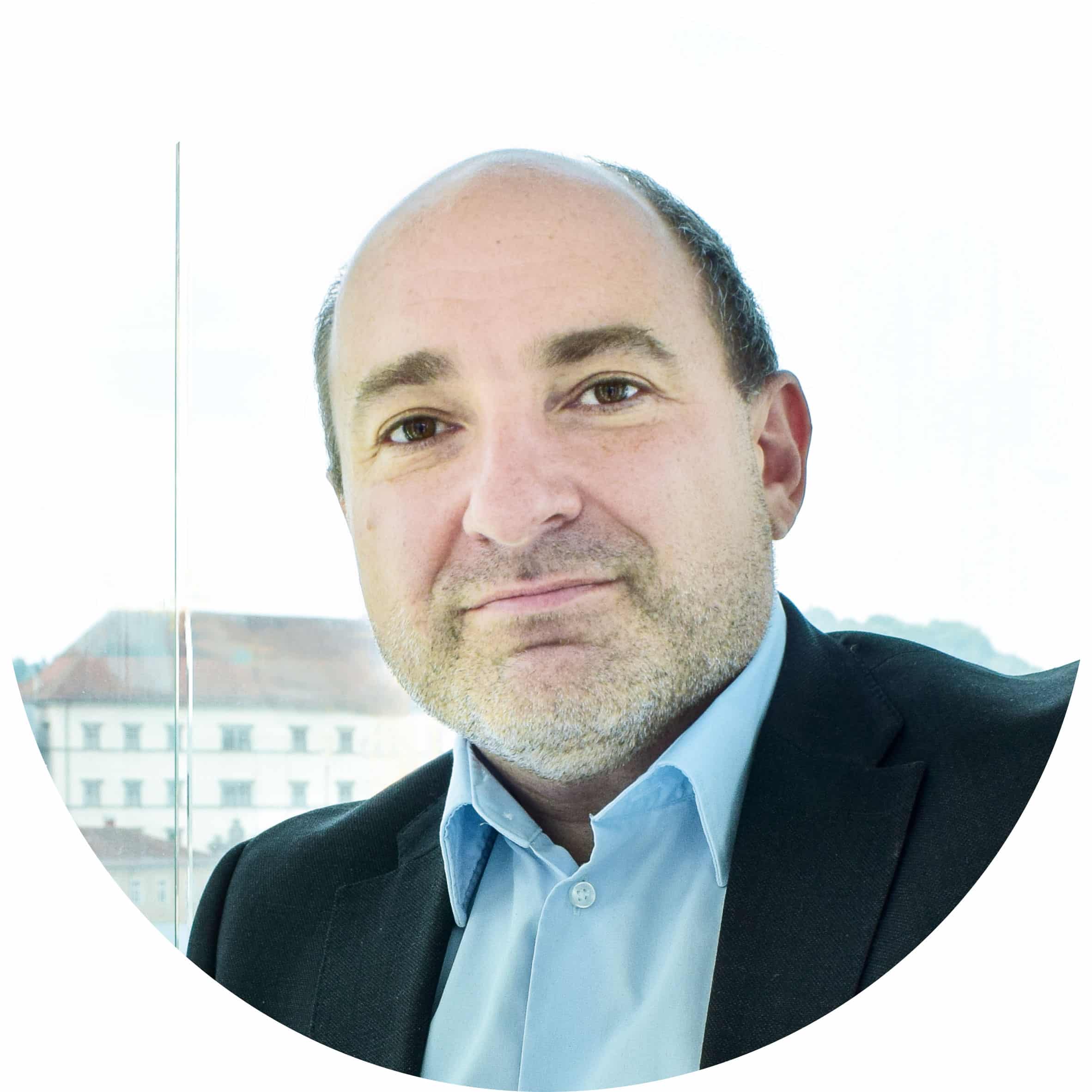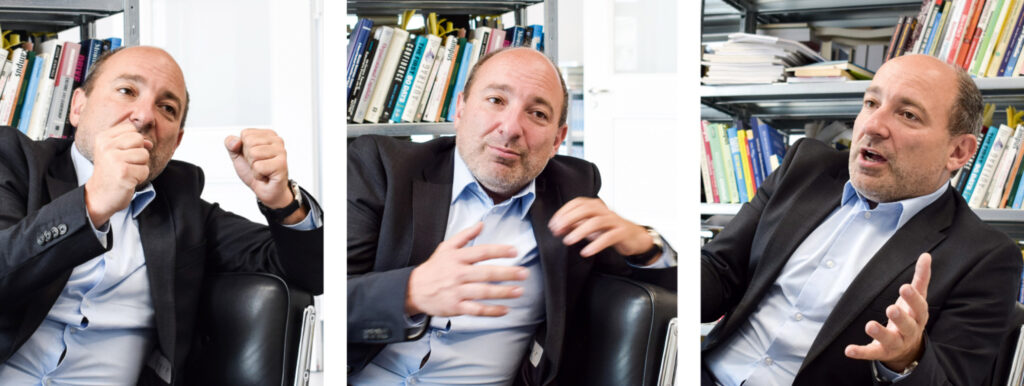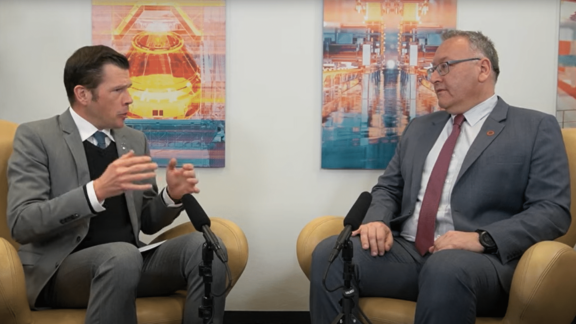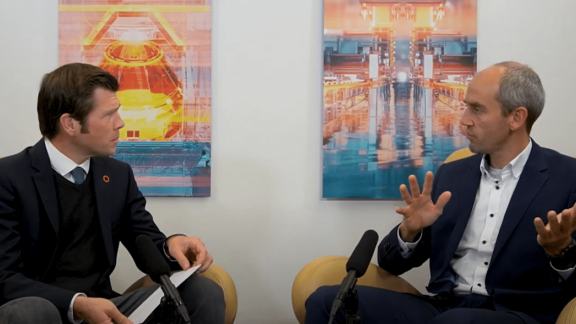Professor Michael Shamiyeh is a trained architect, a versatile scholar with a PhD in strategic management, and an expert in the field of “future-oriented thinking.” He teaches at Stanford University, U.S.A., the University of St. Gallen, Switzerland, and the University of Art and Design in Linz, Austria. Together with his academic partners, he has founded the Linz-based “Center for Future Design,” which aims to provide larger corporations with a new approach and the necessary tools to start thinking out of the box. We asked Shamiyeh about the challenges of pioneering disruptive ideas in established contexts.

What is your approach at the Center for Future Design?
Professor Shamiyeh: We have a different take on how to introduce new ideas into traditional business practices. Rather than trying to adapt and get into “problem-solving mode,” we teach leaders to tackle challenges based on “future thinking.” This is a much-used approach in architecture, where you have to leave any pre-existing frames of reference behind to find a new modus operandi that reflects the times and the challenges at hand. The result is often disruptive but carries more potential than simply altering what existed previously, so it’s dramatically more powerful. At our Center for Future Design, we help companies discover how they can tap into this often unused potential.
Are disruptions more prevalent in information technology companies than in enterprises in the steel industry?
Professor Shamiyeh: I think disruptions are becoming more prevalent in all areas of life, which extends to business administration. Professor Clayton Christensen from Harvard Business School coined the term “disruptive innovation” in the 90s, and we have clearly seen an increase in profound disruptions since then. According to Christensen, disruptions tend to originate in areas unrelated to where their ramifications are ultimately felt most strongly. It is not surprising to see, for instance, artificial intelligence technologies enter unexpected fields to play a major role and introduce extensive change.
Can you name a few examples of such disruptive technologies?
Professor Shamiyeh: Uber certainly comes to mind. The company revolutionized the way taxi companies work. Uber doesn’t own and operate cars—it just connects drivers with passengers. The company is successful thanks to the network infrastructure provided by the Internet and the saturation of today’s smartphones. Airbnb is a similar story: instead of building hotels, renting out rooms, and providing all the related services, Airbnb simply allows private parties to list spare rooms in their houses and apartments for guests to book. It’s an entirely different model than that of the hotel industry.

In one of your essays, you state that today the most disruptive innovations are created not by incumbents but by new market entrants. Do you see this trend continuing?
Professor Shamiyeh: Disruptions tend to happen on the margins of today’s established industries rather than at their center. One important reason why this is the case is that larger corporations are often overly focused on their existing customers, and they base their product development strategy mainly on customer feedback. This can lead to a vicious circle in terms of self-referential innovation and a lack of out-of-the-box thinking. It is then up to new market entrants to challenge this approach and introduce disruptive innovations.
What can market leaders do to compensate for their shortcomings and stay on the technological edge—or even to pioneer new innovations in their fields?
Professor Shamiyeh: First and foremost, they have to be open to new sources of input. Likewise, they have to spot changes in the industry long before markets and competitors recognize that change is afoot. In essence, larger companies have to open themselves up to new ways of thinking. They can invite people with different backgrounds to give presentations, or they can make the conscious effort to hire new employees with contrasting skill sets. I use three terms to characterize this strategy: building awareness of other approaches and new ways of thinking, allowing the involvement of people with different backgrounds, and embedding new ideas and methods into existing operations.
Are there any important qualities in people who strive to actively shape the future?
Professor Shamiyeh: Certainly. Pioneers such as Ferdinand Porsche [the automotive engineer and founder of the Porsche car company] usually have one common strength: they are capable of “re-framing” prevailing ideas and concepts. They can place models that stem from one distinct field into other contexts and produce unexpected results. They are able to question common presuppositions and introduce new perspectives.
Disruptions tend to originate in areas unrelated to where their ramifications are ultimately felt most strongly.”
What is it that enables these pioneers to “re-frame” ideas?
Professor Shamiyeh: It is their ability to switch from one frame of reference to another. Let’s again use Porsche as an example. Porsche was a trained plumber and electrician, who first brought his knowledge into the electrification of factories and later revolutionized the automotive world with the electrically powered wheel-hub motor. He could not have built car engines without his training, even though his training was intended to qualify him for something much less revolutionary. It was all about what he could do with his knowledge rather than what he was supposed to do with it. He reinvented himself—and his craft—and used what he had learned in a different way.
If the ability to “re-frame” is so important, why are universities not encouraging this practice more?
Professor Shamiyeh: Well, in fact, some universities are actively doing this. Stanford University, for instance, actively encourages its students to get their master’s degrees in fields unrelated to their bachelor’s degrees. Students are almost expected to switch fields once or twice. In Europe, to this day, many students stay within the same field over the entirety of their education. In that way, I think they really miss out on the chance to thoroughly explore possibilities and re-frame their ideas.
Is bravery another essential characteristic for a pioneer?
Professor Shamiyeh: Sure, you have to be brave to attempt doing something in a new and different way, because your ambitions will probably be misunderstood; but I would like to emphasize that in my opinion it is not necessary to take great risks to be a successful pioneer. A person can be brave and be a prudent risk manager at the same time—I am convinced that these two qualities are not mutually exclusive.
What’s more important: bravery or excellent risk management?
Professor Shamiyeh: There is no general answer to that question. What I would like to point out is that it’s really not good advice when people tell you to “be brave and take risks.” Often, it’s much better to be brave and conscious of the risks you are facing. Bravery is best achieved when it comes with a sufficient amount of reason and thought. There are many examples of well-known pioneers who I believe would immediately subscribe to this notion, from Bill Gates to the founders of Google. If you read their biographies carefully, you will notice that they shied away from taking unnecessary risks, and yet they were incredibly brave and pioneered the innovations that would shape the future of their generation.


